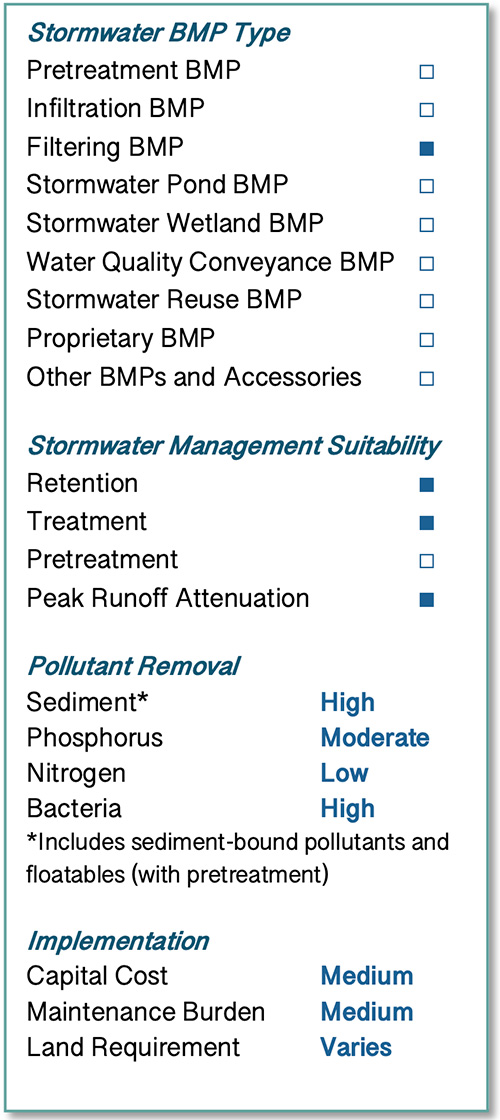Bioretention systems are shallow, vegetated depressions that capture, temporarily store, and filter stormwater runoff. Bioretention systems have an engineered soil media below the surface of the system that facilitates stormwater filtration and vegetative growth. Bioretention systems are frequently designed to infiltrate, commonly referred to as “infiltration” or “exfiltration” bioretention systems but can be designed with an underdrain to capture filtered water and assist with drainage from the system, typically referred to as “flow-through” bioretention systems. In certain situations, bioretention systems can also be designed with impermeable liners to prevent infiltration into the underlying soil.
Bioretention systems remove pollutants through a variety of physical, chemical, and biological processes including filtration, pollutant uptake, and adsorption. Vegetation in the soil bed provides uptake of pollutants and runoff, and the root system helps maintain the infiltration rate in the soil bed. If not designed with an impermeable liner, bioretention systems can provide retention of stormwater and reduce runoff volumes through infiltration and groundwater recharge. Bioretention systems may also be used to provide stormwater quantity control when designed as on-line facilities.
Bioretention systems can be implemented on most sites as part of the urban, suburban, or rural landscape. Given their versatility, many design variants of bioretention systems exist, including bioretention basins, stormwater planters, bioswales, tree filters (see Tree Filter section), and other systems that vary based on shape, location, and configuration.

